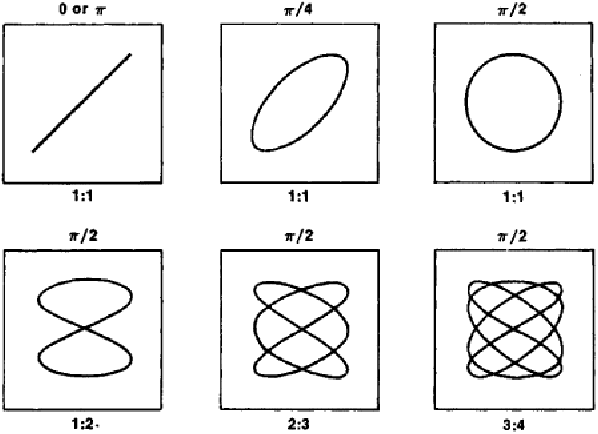If two simple harmonic oscillations with the same frequency act along the same line the result will also be simple harmonic with the same frequency. The amplitude of the resulting wave will depend on the amplitudes and phase difference of the contributing waves. If the frequencies are different then beats will be introduced.
If the waves act perpendicular to each other then
- The frequencies are the same and the waves have equal amplitude. In this case a phase difference of 0 or
 results in a straight line on a cathode ray oscilloscope. As the phase difference increases, the trace produced changes to an oval and a circle. As the phase increases from
results in a straight line on a cathode ray oscilloscope. As the phase difference increases, the trace produced changes to an oval and a circle. As the phase increases from to
to the trace changes first to an oval then back to a straight line. (Top diagrams below).
the trace changes first to an oval then back to a straight line. (Top diagrams below).
-
The frequencies are different and the waves have have a phase difference. For a phase difference of
 the ratio of the frequencies can be deduced from the number of loops along the x and y axes, as shown above.
the ratio of the frequencies can be deduced from the number of loops along the x and y axes, as shown above.
